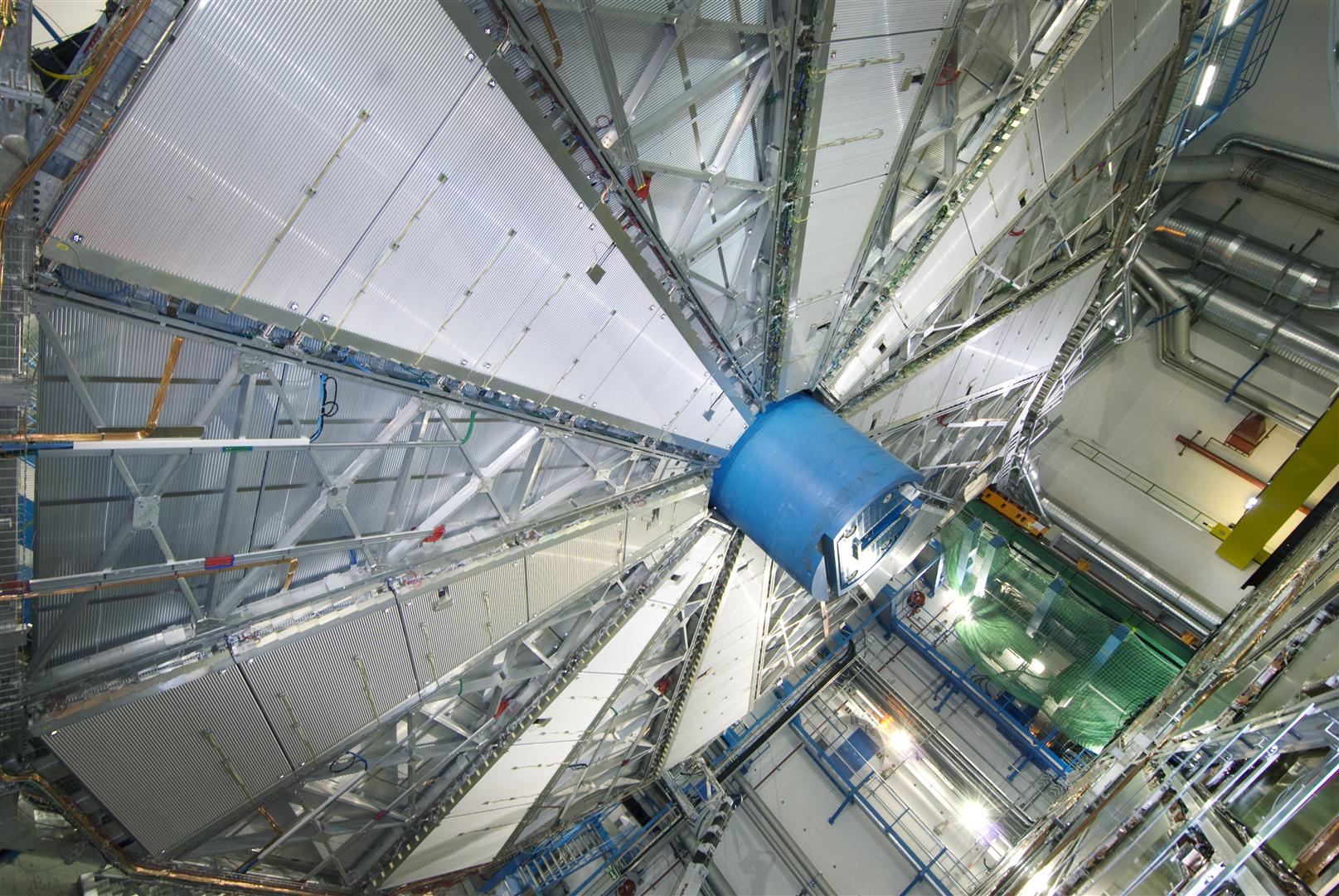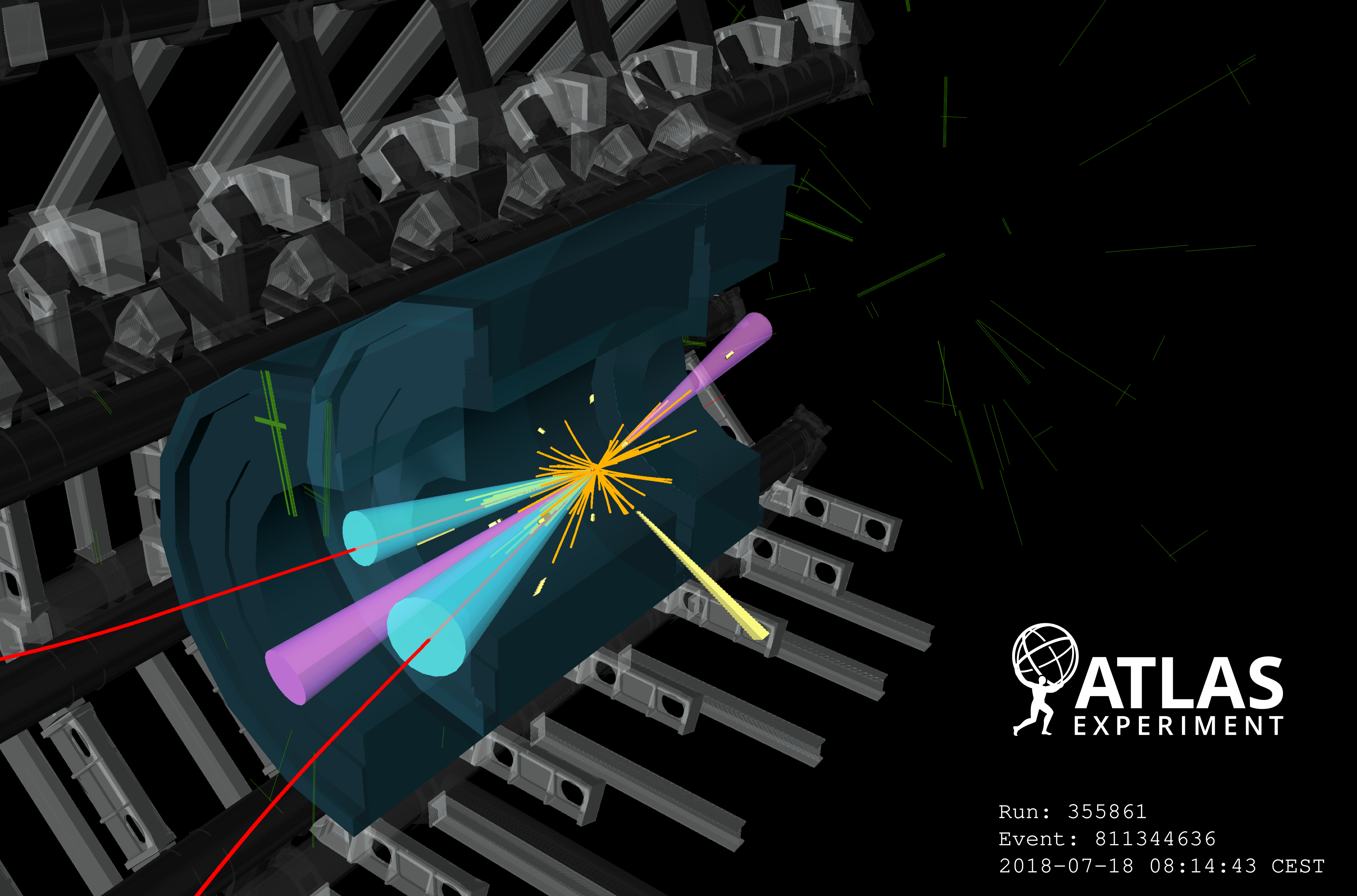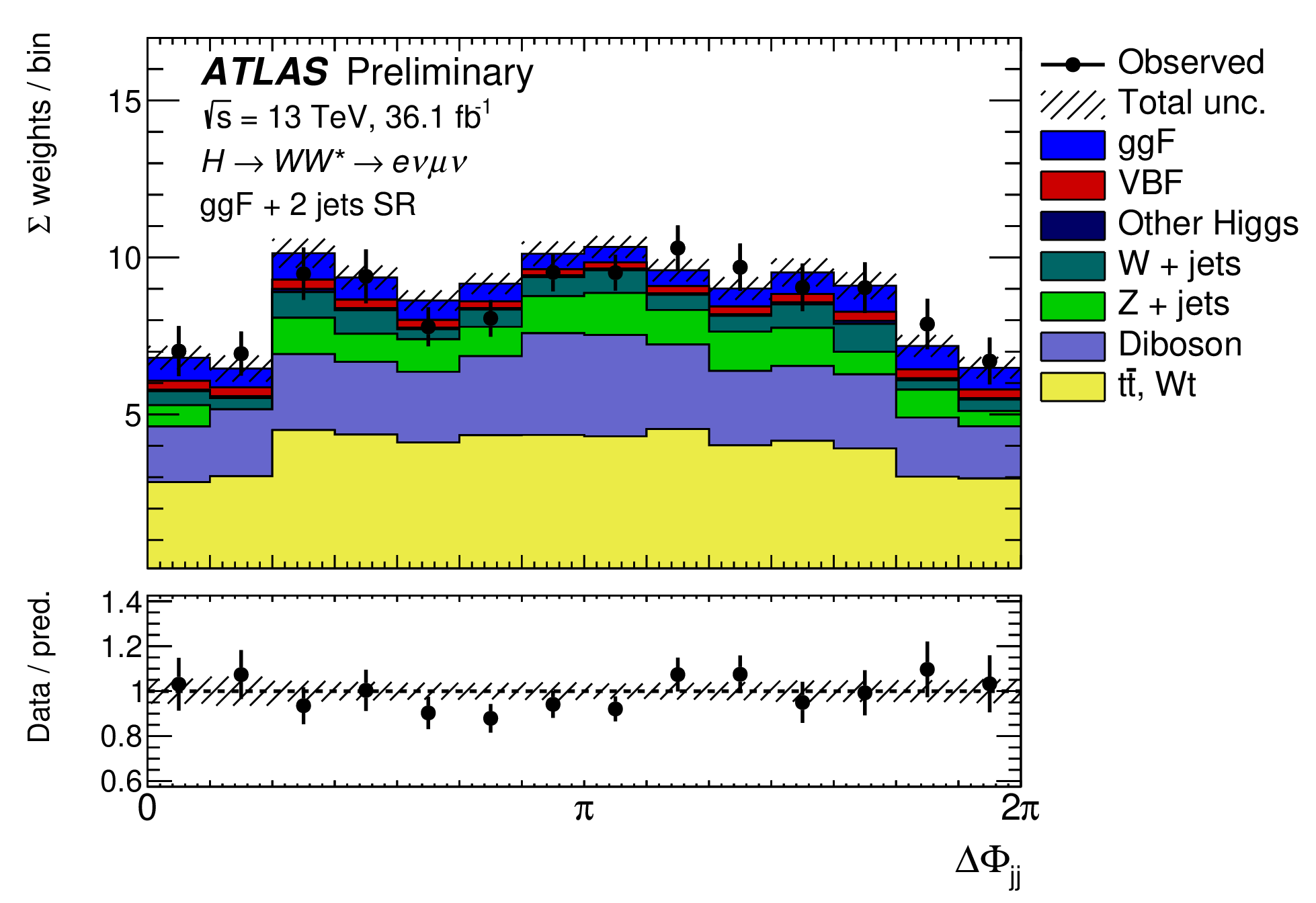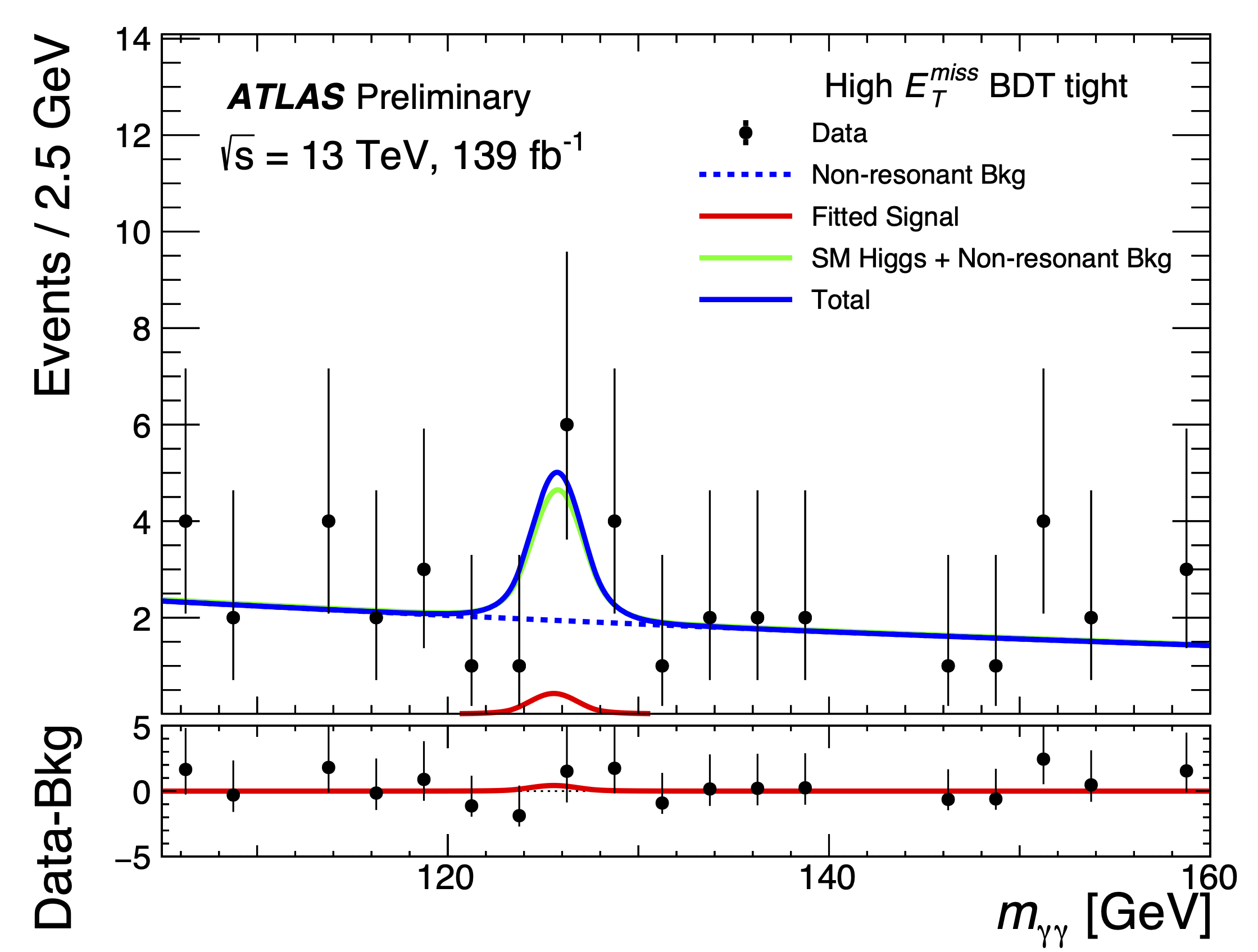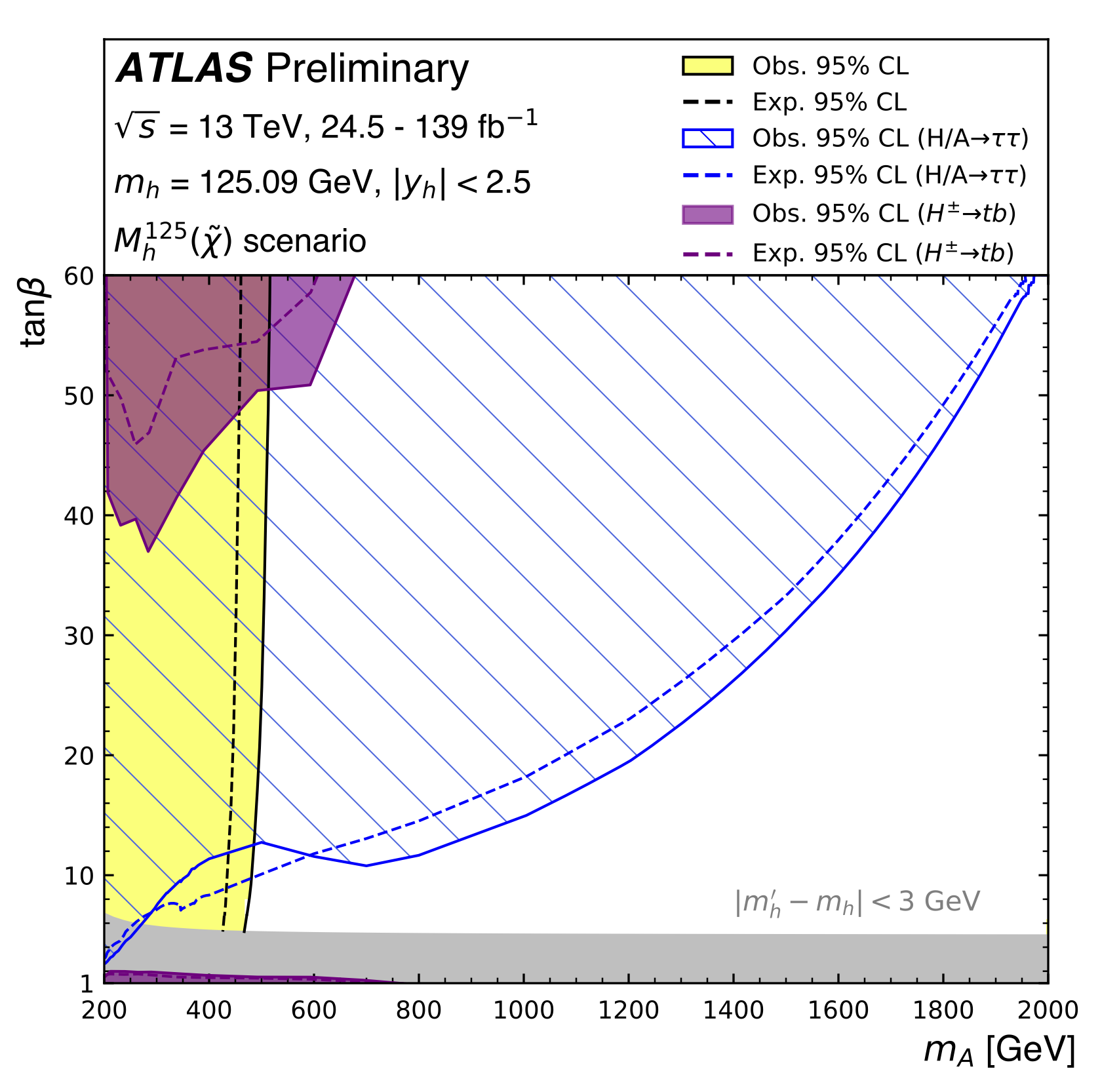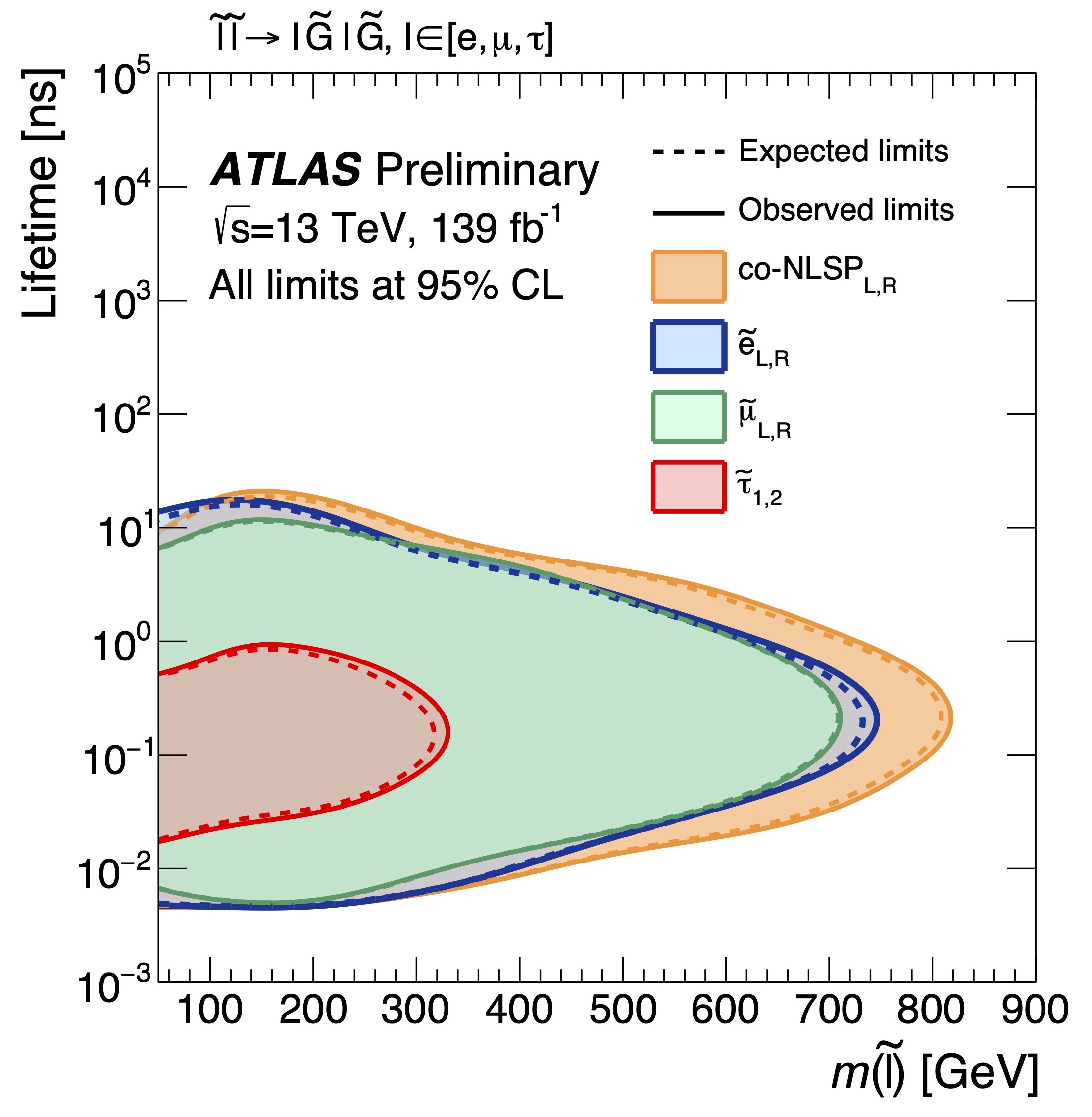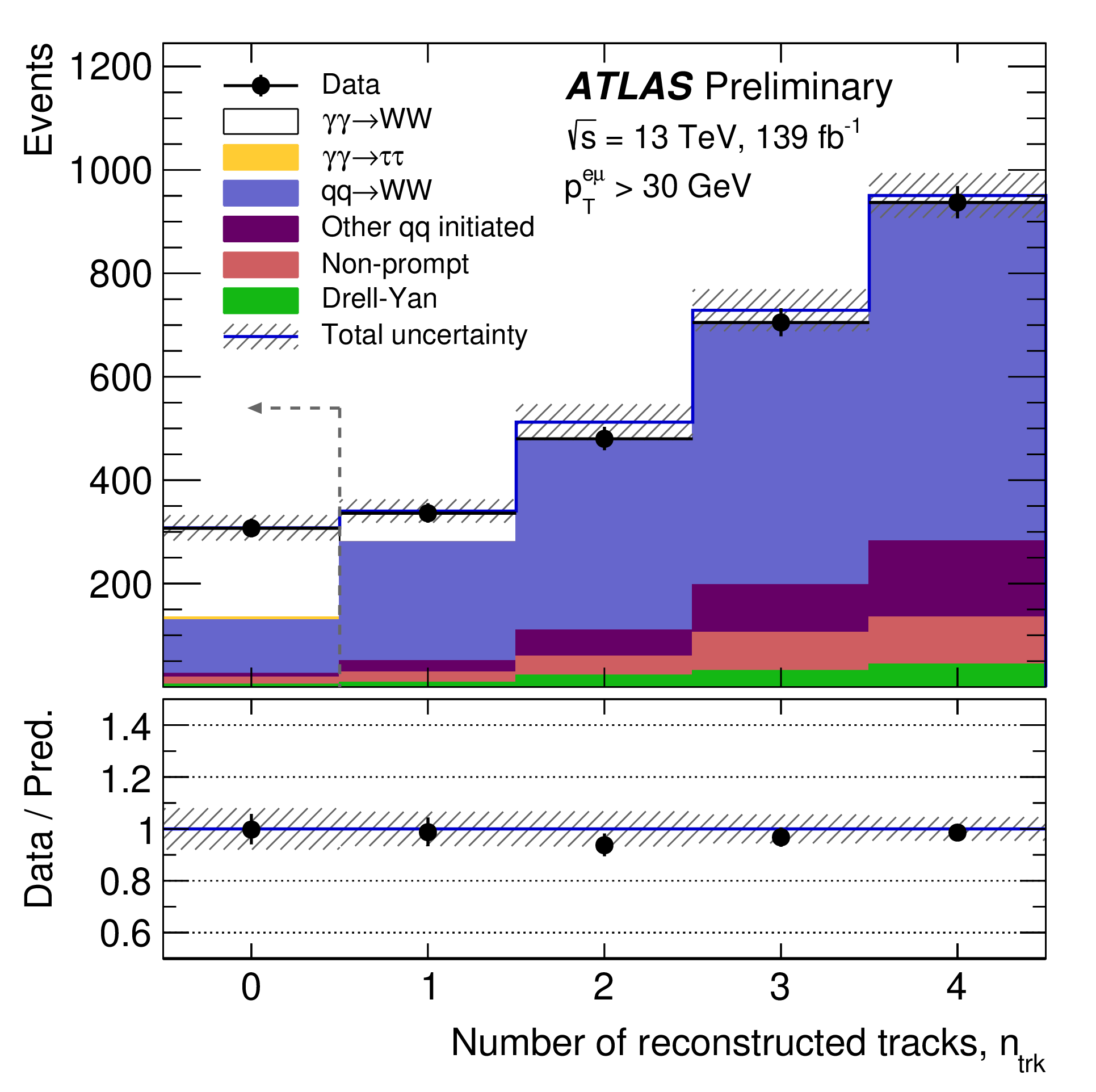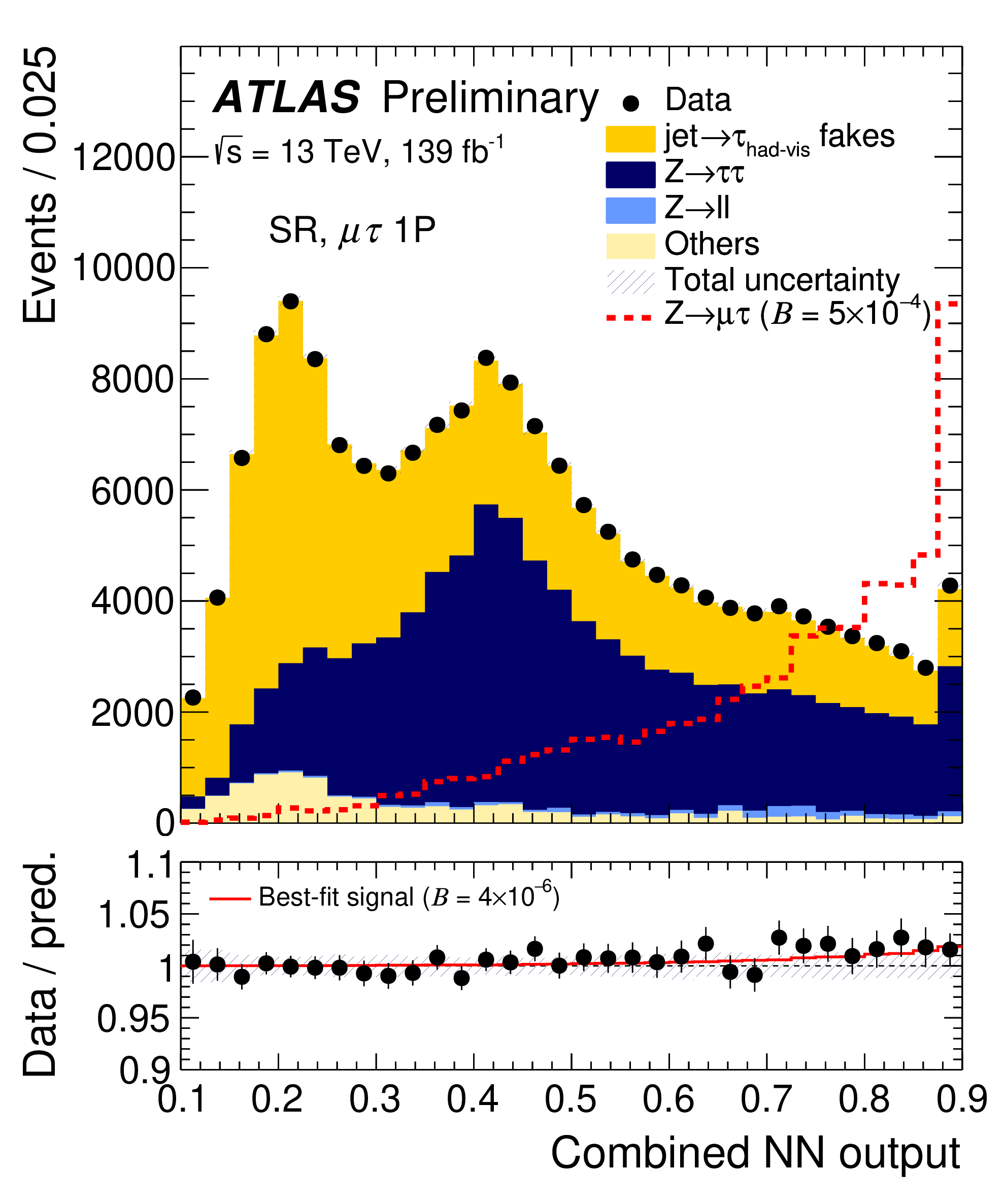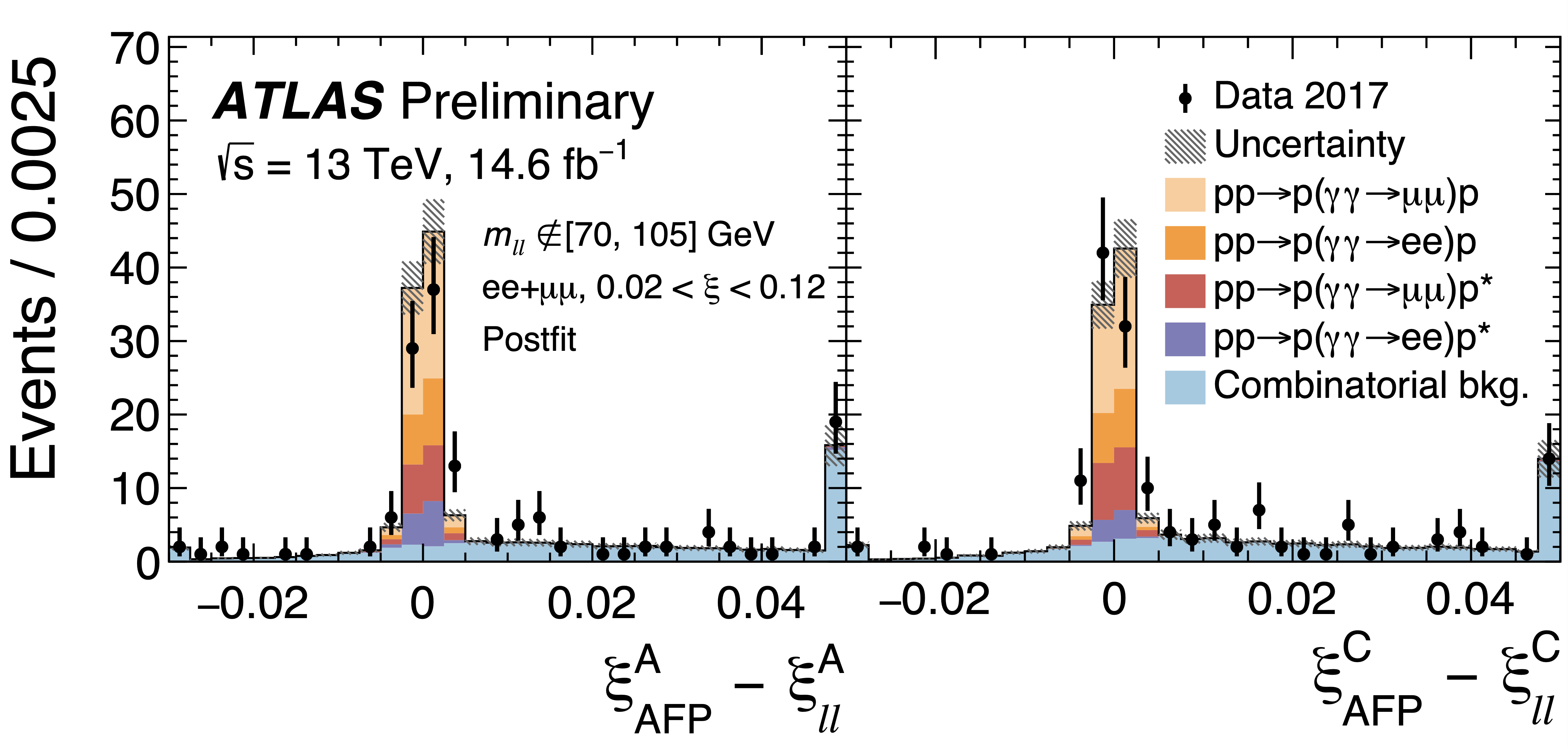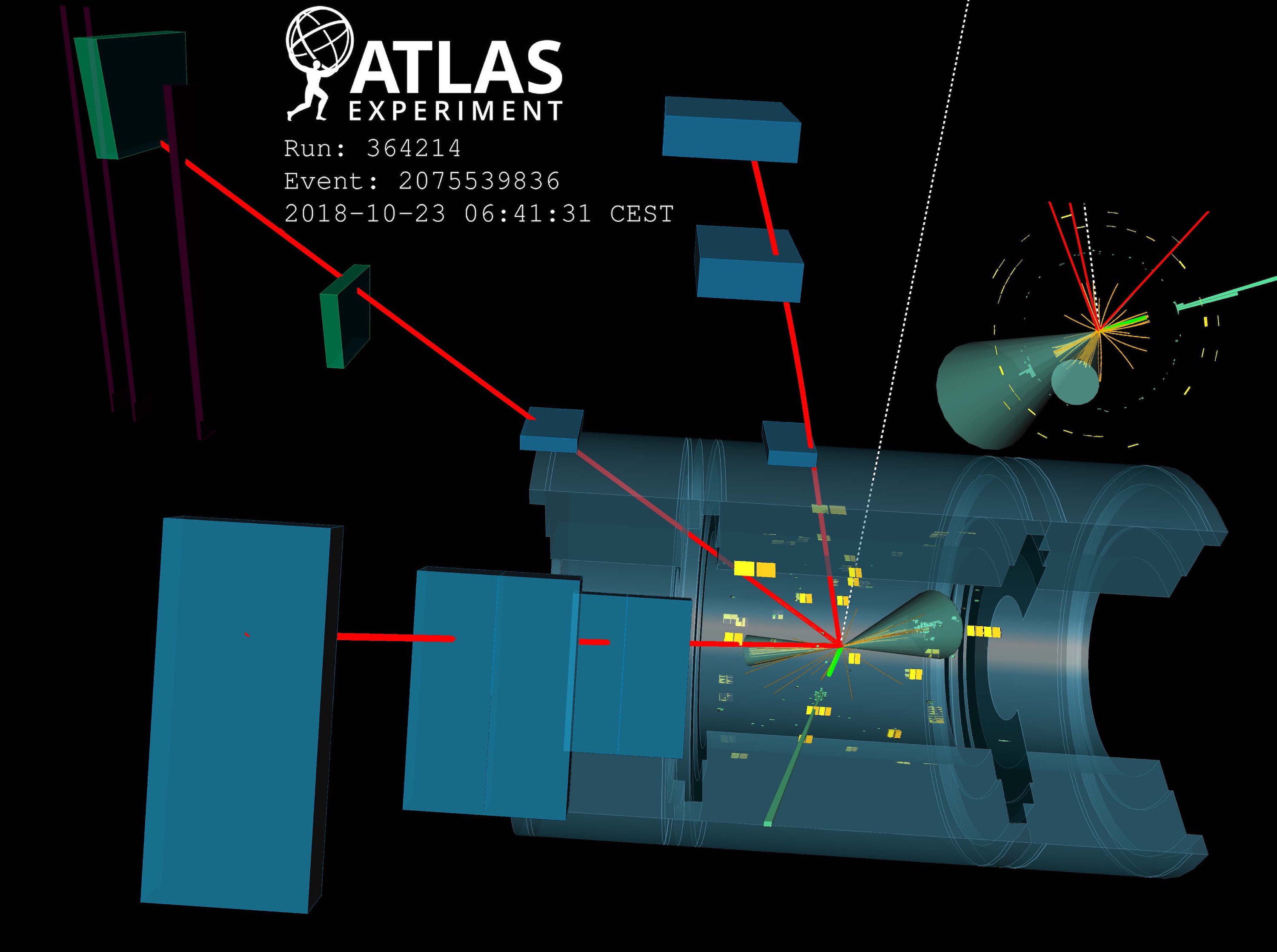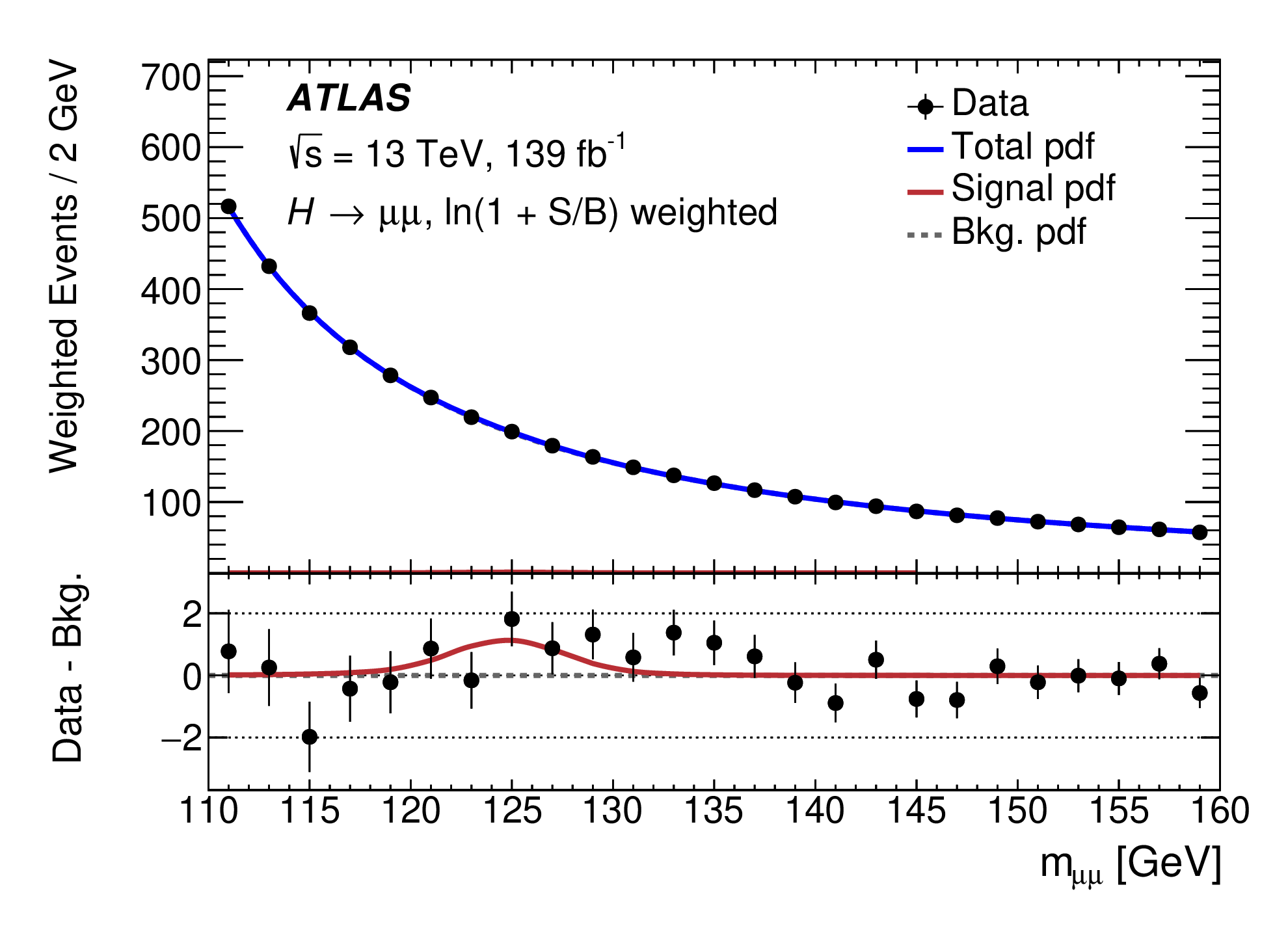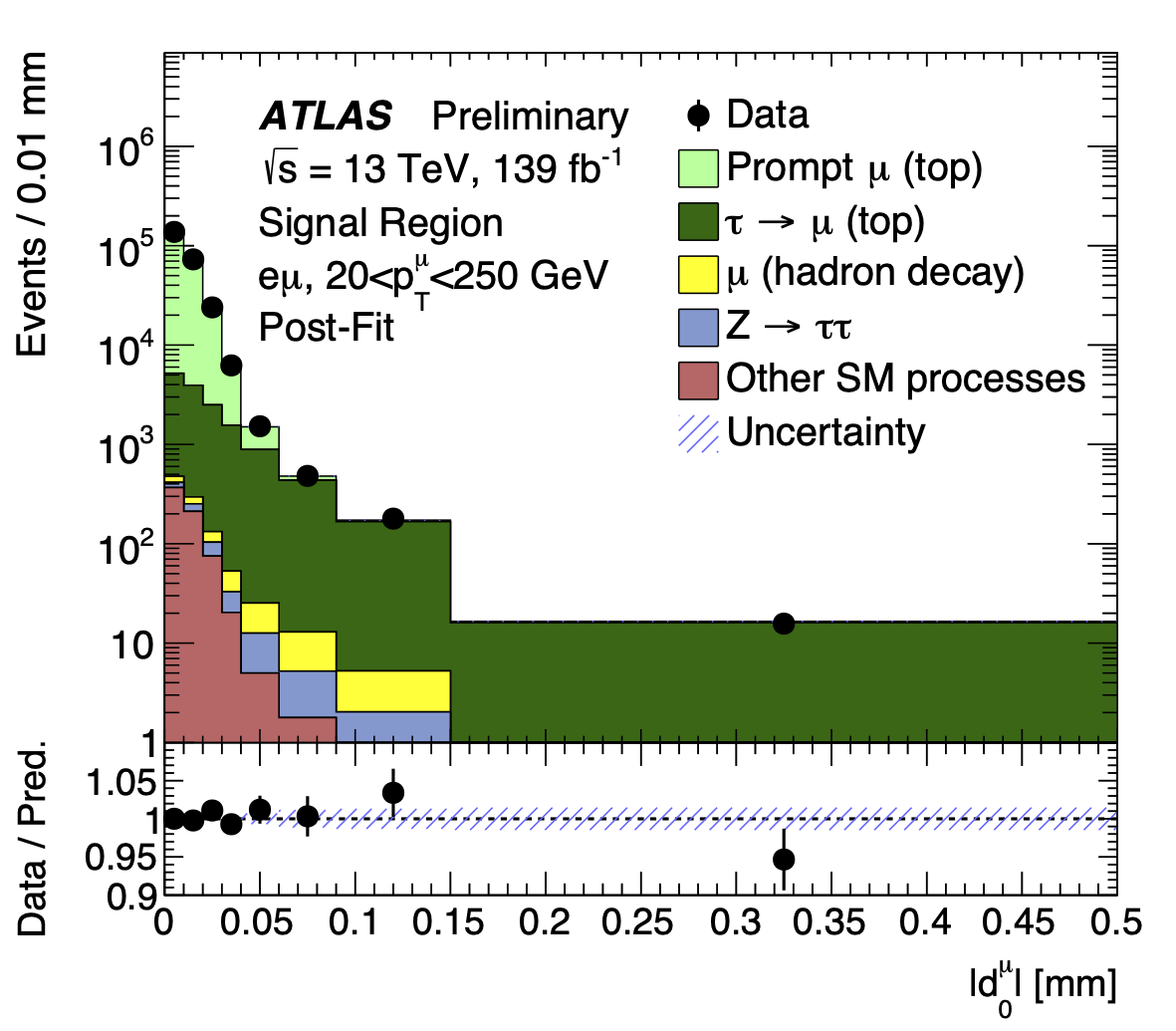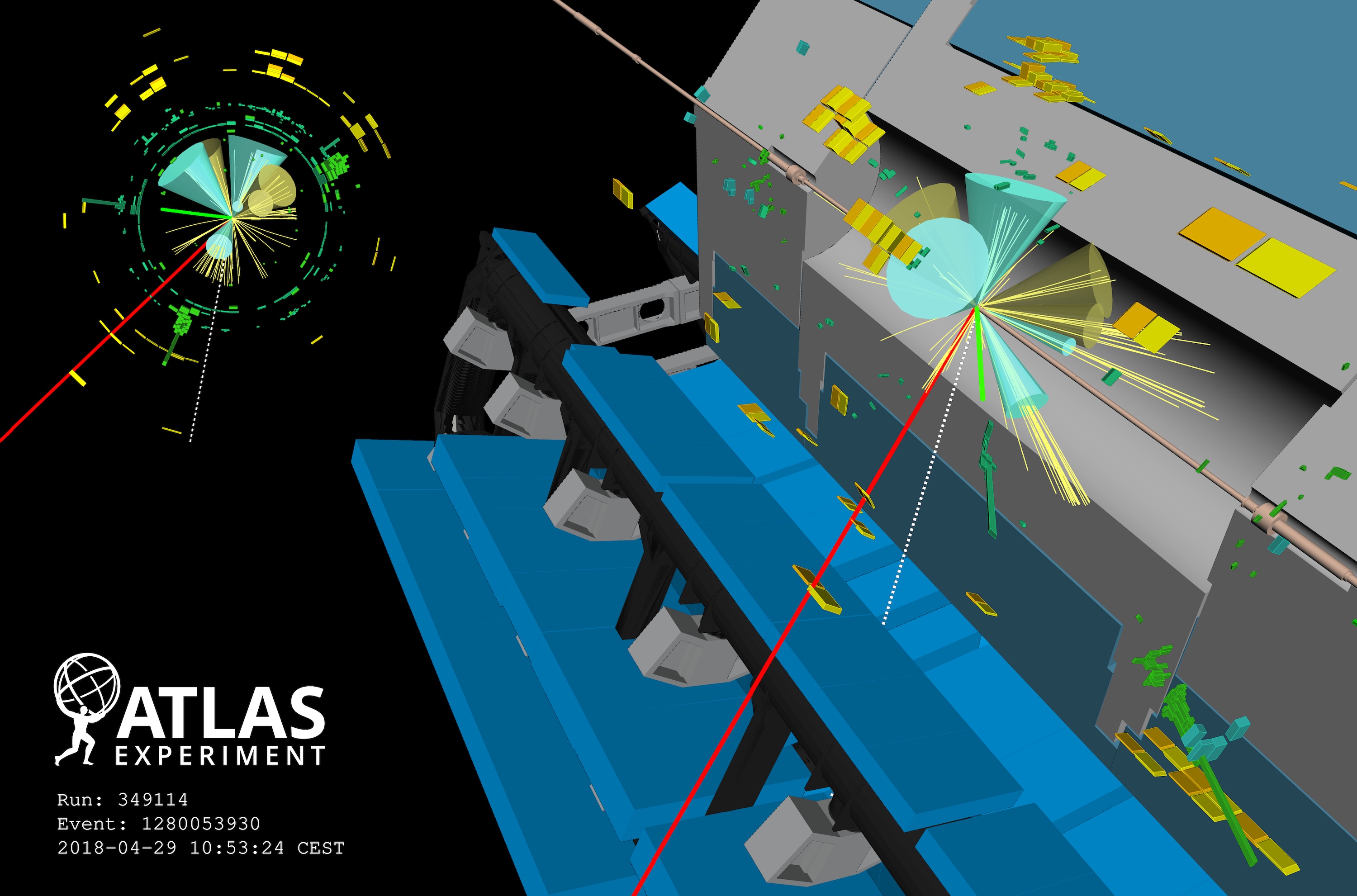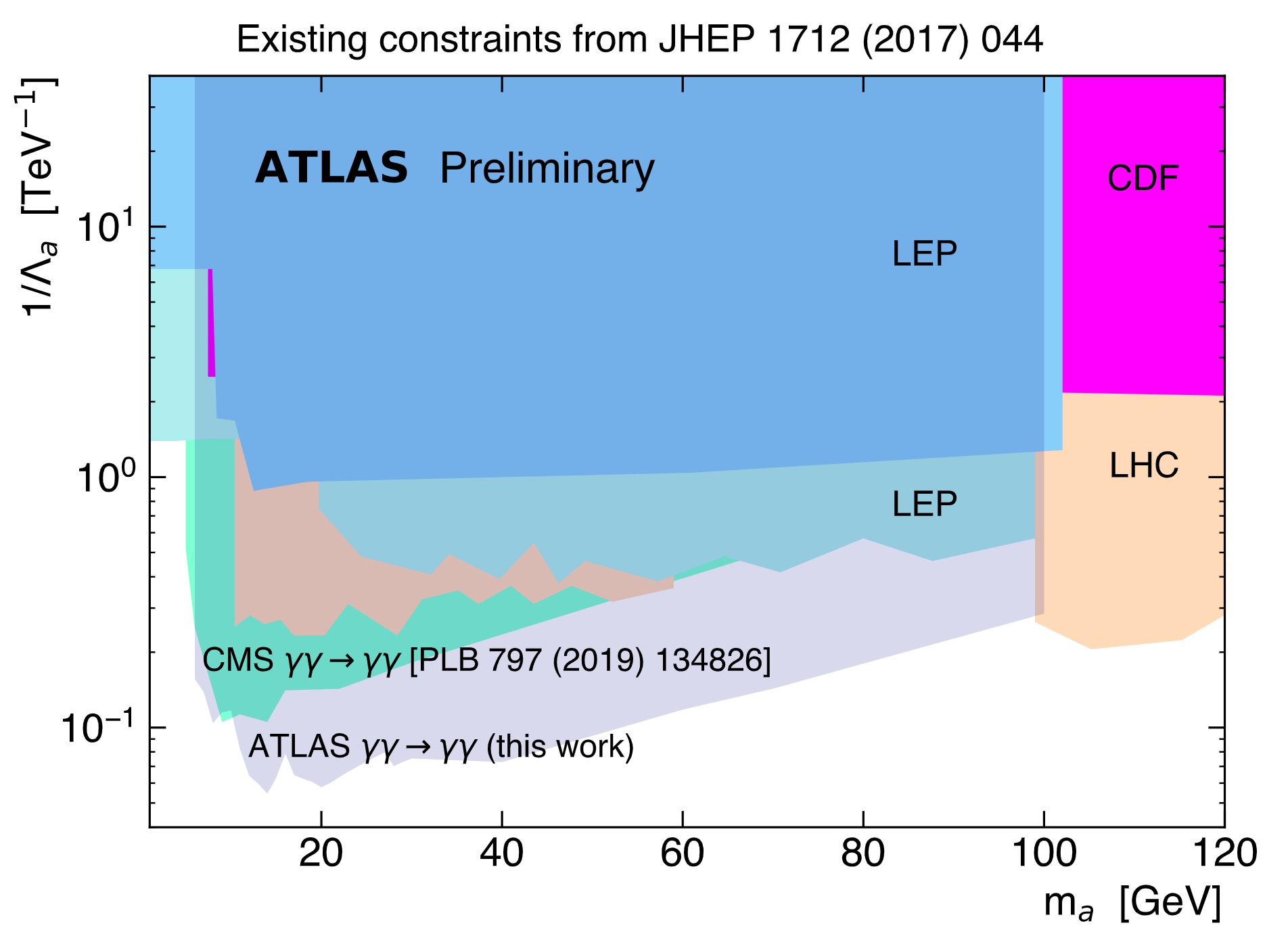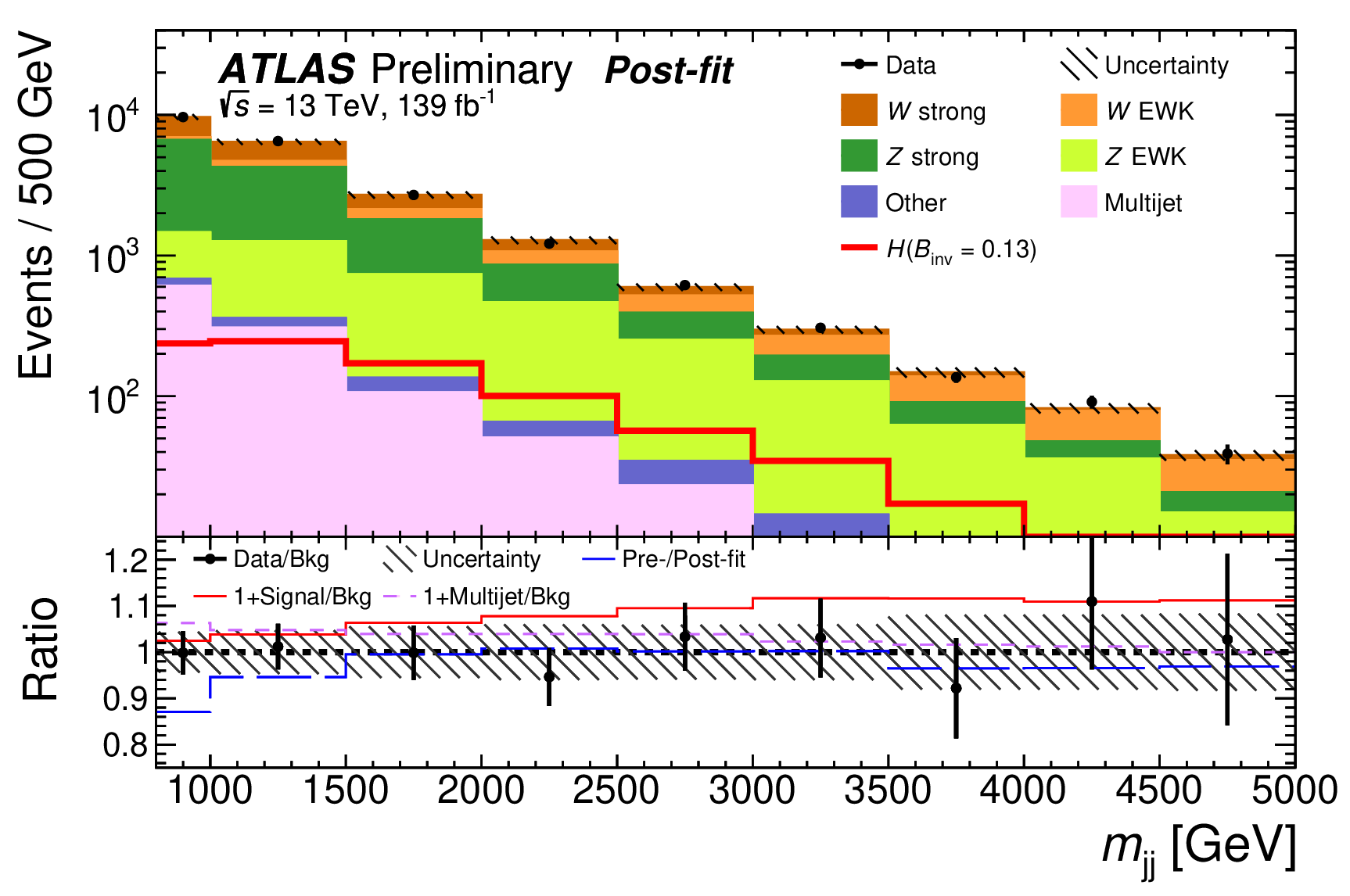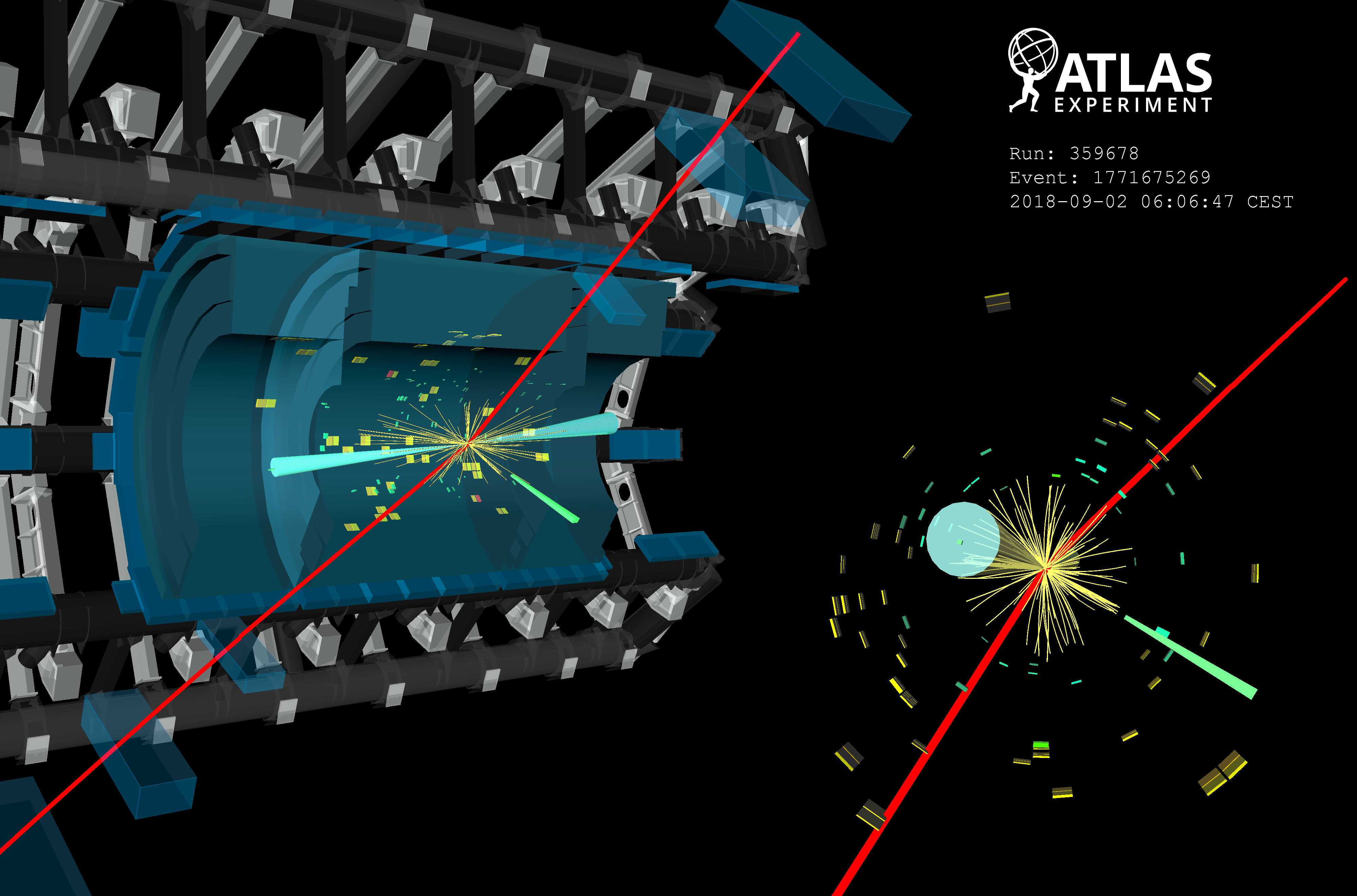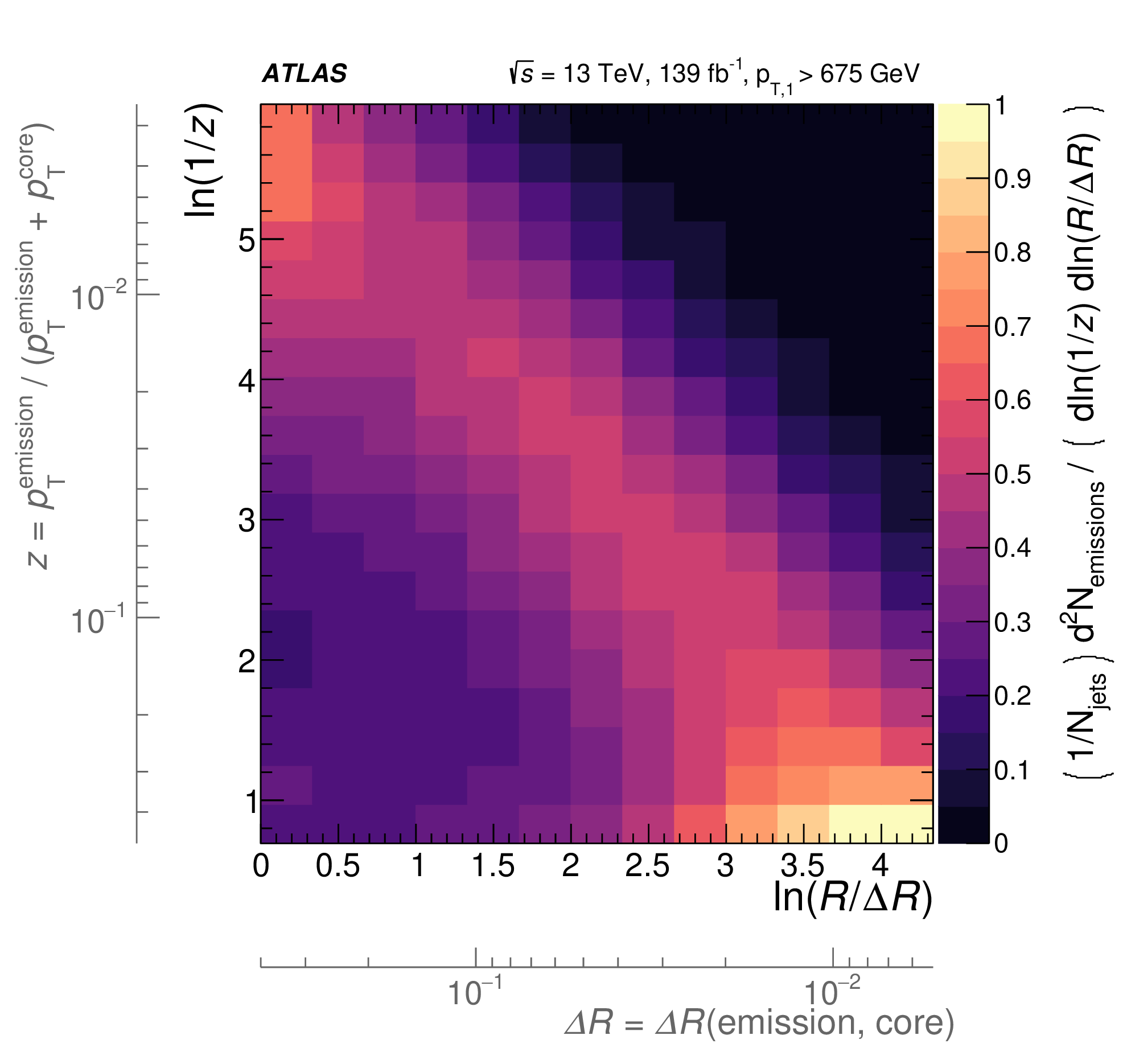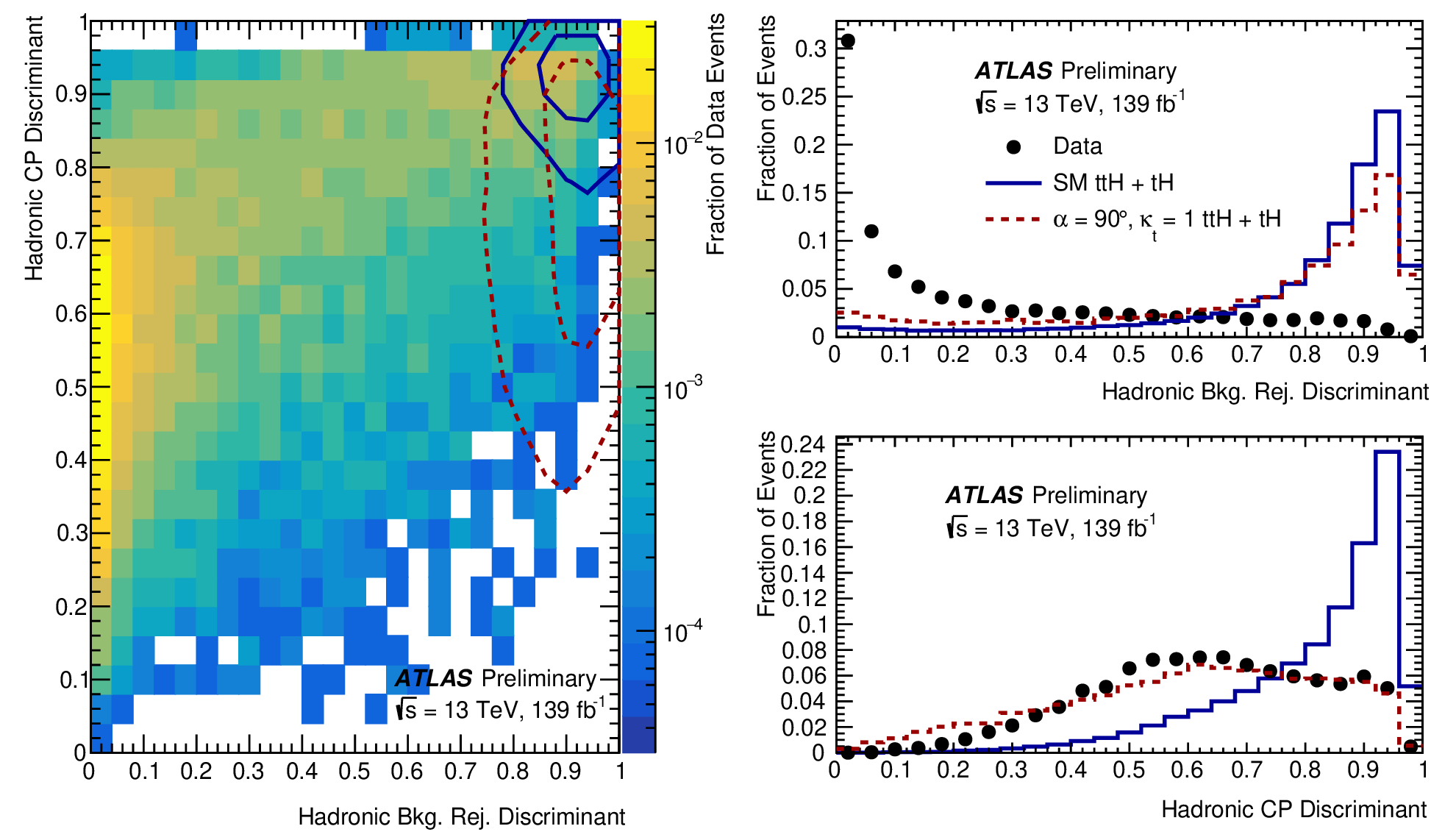Briefings
The power of position: aligning the ATLAS muon spectrometer
ATLAS finds evidence of a rare Higgs boson Dalitz decay to two leptons and a photon
Studying the Higgs boson in its most common – yet uncommonly challenging – decay channel
Refining the picture of the Higgs boson
A new result from the ATLAS Collaboration, released for the Higgs 2020 conference, aims at enriching the Higgs picture by studying its WW* decays.
ATLAS uses the Higgs boson as a tool to search for Dark Matter
One of the great unexplained mysteries is the nature of dark matter. So far, its existence has only been established through gravitational effects observed in space; no dark-matter particles with the needed properties have (yet) been detected. Could the Higgs boson be the key to their discovery?
Higgs boson probes for new phenomena
ATLAS scientists are implementing a new strategy in the search for physics beyond the Standard Model – one that combines measurements across the full spectrum of the Collaboration's research programme.
Leptons at a distance: a new search for long-lived particles
ATLAS researchers are broadening their extensive search programme to look for more unusual signatures of unknown physics, such as long-lived particles. A theory that naturally motivates long-lived particles is supersymmetry (SUSY). A new search from the ATLAS Collaboration – released this week for the 5th International Conference on Particle Physics and Astrophysics (ICPPA-2020) – looks for the superpartners of the electron, muon and tau lepton
Z bosons zoom through quark–gluon plasma as jets quench
With new data from the LHC, ATLAS physicists have measured jet-quenching phenomena in the quark–gluon plasma with help of Z bosons.
ATLAS observes W-boson pair production from light colliding with light
The ATLAS Collaboration has announced the first observation of two W bosons produced from the scattering of two photons — particles of light – at the International Conference on High-Energy Physics (ICHEP 2020).
New ATLAS result marks milestone in the test of Standard Model properties
The ATLAS Collaboration has released a new study into a key building block of matter: leptons. This type of particle comes in three different families (flavours) and, according to the Standard Model, should follow strict rules. For instance, except for their mass, leptons of different flavours have identical properties – a feature known as lepton flavour universality. This was recently corroborated by a key measurement of the W-boson decay rates into leptons by the ATLAS Collaboration.
New measurements of the Higgs boson find strength in unity
Physicists can study Higgs-boson couplings in several ways: by measuring the rates of different Higgs boson production mechanisms and decays, and also by studying the particle’s kinematic properties. The ATLAS Collaboration has just presented precise new measurements of these key quantities. Several of these measurements were updated to use the full LHC Run 2 dataset (2015–2018), to provide the best precision to date.
Looking forward: ATLAS measures proton scattering when light turns into matter
Today, at the International Conference for High Energy Physics (ICHEP 2020), the ATLAS Collaboration announced first results using the ATLAS Forward Proton (AFP) spectrometer. With this instrument, physicists directly observed and measured the long sought-after prediction of proton scattering when particles of light turn into matter.
ATLAS probes interactions between heavyweights of the Standard Model
In the contest for the heaviest known elementary particle, the top quark and Z boson rank first and third, respectively. When a proton–proton collision produces a top-quark pair together with a Z boson – a process known as ttZ production – their total mass can reach an impressive 440 GeV! The discovery of this highly energetic process thus required the record collision energy and rate of the LHC; no previous collider could come close.
Jetting into the dark side: a precision search for dark matter
The nature of dark matter remains one of the great unsolved puzzles of fundamental physics. Many theoretical scenarios postulate that dark matter particles could be produced in the intense high-energy proton–proton collisions of the LHC. While the dark matter would escape the ATLAS detector unseen, it could occasionally be accompanied by a visible jet of particles radiated from the interaction point. Today, at the International Conference in High-Energy Physics (ICHEP 2020), ATLAS presented a new search for novel phenomena in collision events with jets and high missing transverse momentum (MET).
ATLAS one step closer in the search for rare Higgs boson decays to muons
The ATLAS Collaboration has released a new paper on the search for the Higgs-boson decay to a pair of muons. The new study uses the entire dataset collected by the ATLAS experiment during Run 2 of the LHC (2015–2018) to give a first hint of this elusive process.
Keeping the ATLAS Inner Detector in perfect alignment
How do you track a particle’s trajectory when your detector keeps moving? What if you find slight biases in your detector’s measurements? These were the challenges faced by the ATLAS Inner Detector during Run 2 of the LHC (2015–2018). Located at the heart of the experiment, the Inner Detector provides efficient and precise measurements of charged-particle tracks. In a new paper released today, physicists describe the complex solutions they developed to align the Inner Detector, ensuring the continued accuracy of the experiment.
New ATLAS result addresses long-standing tension in the Standard Model
This week, at the LHCP 2020 conference, the ATLAS Collaboration presented a precise measurement of lepton flavour universality using a brand-new technique. Physicists examined collision events where pairs of top quarks decay to pairs of W bosons, and subsequently into leptons. They then measured the relative probability that this lepton is a muon or a tau-lepton – a ratio known as R(τ/μ). According to the Standard Model, R(τ/μ) should be unity – but there has been long-standing tension with this prediction, ever since it was measured at the Large Electron-Positron (LEP) collider in the 1990s.
Fantastic decays and where to find them
Supersymmetry offers an elegant solution to the limitations of the Standard Model, extending it to give each elementary particle a “superpartner” with different spin properties. Yet SUSY also contains interactions that would cause phenomena not observed in nature, such as the decay of protons. This has traditionally been avoided by requiring the conservation of a property known as “R-parity” (or “matter-parity”), which incorporates the baryon number, lepton number and spin. ATLAS physicists are also considering SUSY models with R-parity violation (or “RPV”), which would allow the lightest SUSY particle to be observed decaying directly into Standard Model particles.
ATLAS finds evidence of spectacular four-top quark production
In a new result released today, the ATLAS Collaboration announced strong evidence of the production of four top quarks. This rare Standard Model process is expected to occur only once for every 70 thousand pairs of top quarks created at the LHC and has proven extremely difficult to measure.
ATLAS measures light scattering on light and constrains axion-like particles
Light-by-light scattering is a very rare phenomenon in which two photons – particles of light – interact, producing another pair of photons. Direct observation of this process at high energy had proven elusive for decades, until it was first seen by the ATLAS Collaboration in 2016 and established in 2019. In a new measurement, ATLAS physicists are using light-by-light scattering to search for a hyped phenomenon beyond the Standard Model of particle physics: axion-like particles.
Machine learning qualitatively changes the search for new particles
The ATLAS Collaboration is exploring novel ways to search for new phenomena. Alongside an extensive research programme often inspired by specific theoretical models – ranging from quantum black holes to supersymmetry – physicists are applying new model-independent methods to broaden their searches. ATLAS has just released the first model-independent search for new particles using a novel technique called “weak supervision”.
Probing Dark Matter with the Higgs boson
Could the Higgs boson decay into dark matter? As dark matter does not interact directly with the ATLAS detector, physicists look for signs of “invisible particles”, inferred through momentum conservation of the proton–proton collision products. The ATLAS Collaboration searched the full LHC Run-2 dataset, setting the strongest limits on the Higgs boson decaying to invisible dark-matter particles to date.
ATLAS searches for rare Higgs boson decays into a photon and a Z boson
The ATLAS Collaboration has just released a new result searching for the Higgs-boson decay to a Z boson and a photon. This result uses the full LHC Run-2 dataset, analysing almost four times as many Higgs-boson events as the previous ATLAS result.
Novel probes of the strong force: precision jet substructure and the Lund jet plane
A hallmark of the strong force at the Large Hadron Collider (LHC) is the dramatic production of collimated jets of particles when quarks and gluons scatter at high energies. Particle physicists have studied jets for decades to learn about the structure of quantum chromodynamics – or QCD, the theory of the strong interaction – across a wide range of energy scales. Recent theoretical and experimental advancements in their study is now allowing ATLAS physicists to test the strong force in new ways.
Searching for new sources of matter–antimatter symmetry breaking in Higgs boson interaction with top quarks
When a particle is transformed into its antiparticle and its spatial coordinates inverted, the laws of physics are required to stay the same – or so we thought. This symmetry – known as “CP symmetry” (Charge conjugation and Parity symmetry) – was considered to be exact until 1964, when a study of the kaon particle system led to the discovery of “CP violation”. In a new result presented today, the ATLAS Collaboration performed a direct test of the CP properties of the interaction between the Higgs boson and top quarks. The result is based on an analysis of the full LHC Run-2 dataset, looking at collision events where the Higgs boson is produced in association with one or two top quarks, and in turn decays into two photons.

